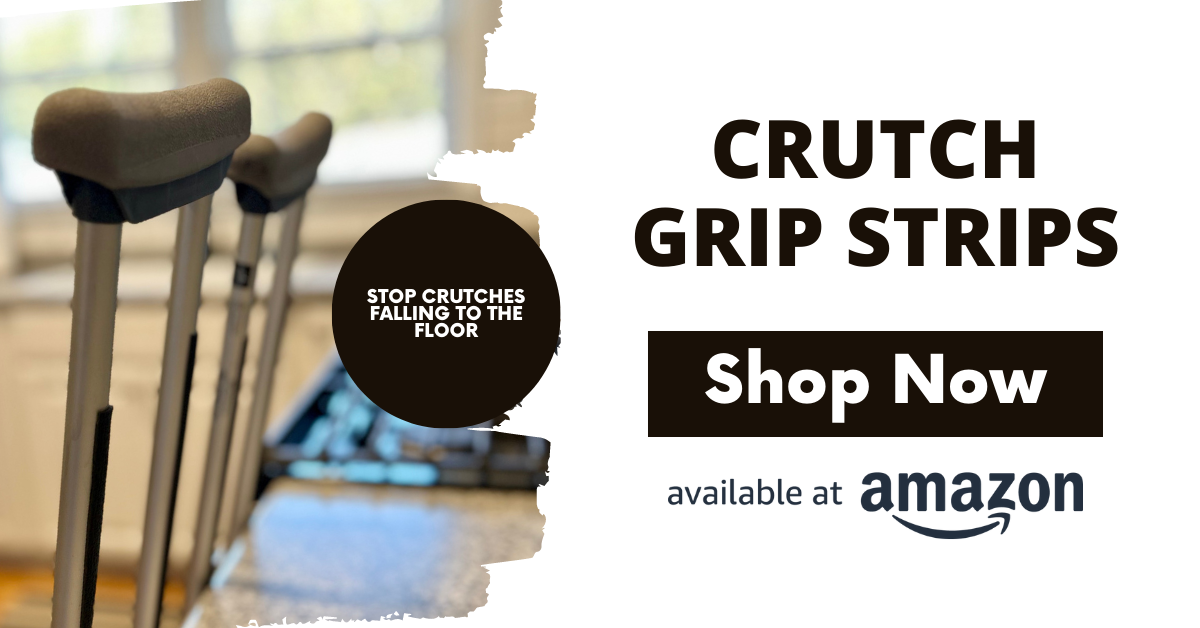Exploring Different Types of Crutches & Choosing the Best Option
Crutches are valuable mobility aids that assist individuals with injuries or mobility challenges in maintaining their independence and staying mobile. However, with several types of crutches available, it can be overwhelming to choose the most suitable option. In this guide, we will explore the common types of crutches, the best type for walking, and factors to consider when making your selection. Let's delve into the world of crutches and find the perfect fit for your needs.
Types of Crutches
There are three main types of crutches, each with its unique design and functionality:
Underarm Crutches
Underarm crutches, also known as axillary crutches, are the most common type. They consist of a padded horizontal bar that fits under the arms, along with handgrips and shafts that extend down to the ground. Underarm crutches are usually used in pairs and provide support by bearing the user's weight through the arms and hands.
Forearm Crutches
Forearm crutches, also called Lofstrand or Canadian crutches, have cuffs that encircle the forearms, providing support to the user's hands and wrists. These crutches offer increased stability and control and are particularly suitable for individuals with chronic conditions or long-term use.
Platform Crutches
Platform crutches, also known as triceps crutches, feature a horizontal platform at the top, where users rest their forearms instead of gripping handgrips. These crutches are designed for individuals who cannot bear weight on their hands and wrists, providing an alternative weight-bearing option.
Best Type of Crutch for Walking
The best type of crutch for walking largely depends on individual needs, preferences, and the nature of the injury or mobility challenge. Each type of crutch has its advantages:
Underarm Crutches for Easy Mobility
Underarm crutches are often preferred for short-term use and temporary injuries due to their familiarity and ease of use. They offer quick mobility and are ideal for those who only require crutches temporarily [learn how to make crutches more comfortable], such as after a sprain or strain.
Forearm Crutches for Enhanced Stability
Forearm crutches provide increased stability and control, making them a better choice for users who require long-term support or have chronic conditions. The cuff design allows users to release their hands for tasks without putting the crutches down.
Platform Crutches for Non-Weight Bearing:
Platform crutches are recommended for individuals who cannot bear weight on their hands or wrists. The forearm platform provides excellent support and prevents any weight on the hands, making them suitable for specific injuries or conditions.
Factors to Consider When Choosing Different Types Of Crutches
Selecting the most appropriate type of crutch depends on several factors, including:
Injury or Condition: Consider the type and severity of your injury or condition. Short-term injuries and certain types of surgeries may be better suited for underarm crutches, while forearm crutches or platform crutches might be more suitable for chronic conditions or long-term use.
Comfort and Stability: Ensure the chosen type of crutch offers comfort and stability during use. The correct fit and ergonomic design play a vital role in preventing discomfort and ensuring safe mobility.
Mobility Requirements: Evaluate your mobility requirements, such as navigating stairs, uneven surfaces, or tight spaces. Choose crutches that offer the necessary support and maneuverability for your daily activities.
Conclusion
Crutches play a crucial role in assisting individuals with mobility challenges to stay active and independent.
Understanding the different types of crutches, and their respective benefits, and considering individual needs are essential in choosing the most suitable crutch type.
Whether you opt for underarm crutches for easy mobility, forearm crutches for enhanced stability, or platform crutches for non-weight bearing, the right choice will empower you to move confidently and comfortably on your path to recovery.
Remember to consult your healthcare professional for personalized guidance and ensure your safety throughout the rehabilitation process.

